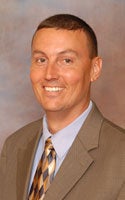
Credit: United Soybean Board
There’s new proof that precision agriculture is on the rise.
Earlier this month, CropLife magazine and Purdue University released a survey that found more than 85 percent of agricultural retailers plan on investing in precision agriculture services in the next year. And more than 15 percent of the 2,000 retailers surveyed will invest over $100,000.
This is good news for increasing fertilizer efficiency, because precision technologies can go a long way toward helping farmers know when and where to apply fertilizer. Applying fertilizer when, where, and in the amounts it’s needed can help save on input costs and reduce the environmental impacts that occur when excess nitrogen runs off into nearby waters or is released into the air.
But there’s a caveat – with so many precision agriculture tools available today and even more coming to market on a regular basis, how is a farmer to know what is best? Growers need to have confidence that precision ag tools will help them optimize their fertilizer use, improve their farm’s sustainability, and protect their yields. Read More










 There’s a new reason to celebrate your favorite sugar cookie. The Campbell Soup Company has
There’s a new reason to celebrate your favorite sugar cookie. The Campbell Soup Company has 






